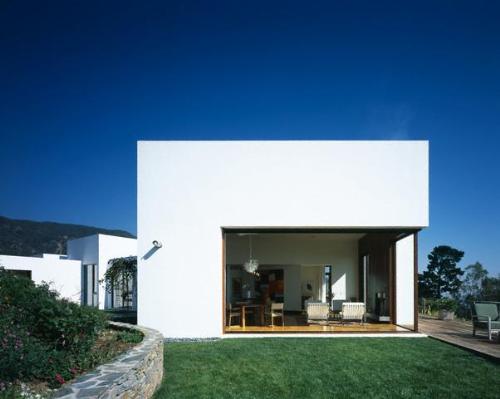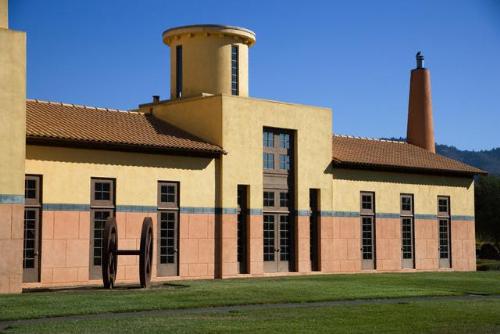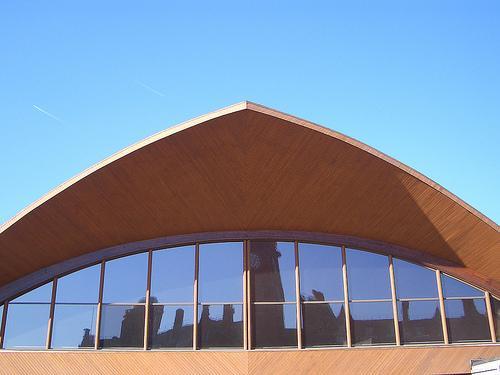Types of Roofing
The uppermost part of a constructed structure is called roof, provided to protect the building from rain, wind, snow, sun etc. It protects human beings, animals and also materials kept inside building. The roof should be strong, stable, weather proof and safe against fire and disaster.Roofing According to Shape
- Flat Roofs
- Pitched Roofs
- Shell Roofs
Flat Roofs
Flat roofs have a slope from 1 degree to 5 degrees. These roofs are constructed in the same way as floor is. The roof acts much in the same way as a level plate form to support the load. This roof differs from intermediate floor in view of top finish called as ‘Terracing’. This terracing protects roof from adverse effects of rain, snow, heat etc.
A cubical shape house with flat roof
(This Picture is Contributed by "Tara Vajpayee")
Advantages of Flat Roof
- It can be used for living purposes.
- It is comparatively safer than other types of roofs.
- Its construction and maintenance is simpler and more economical.
- It provides better light, ventilation and architectural appearance.
- The construction of upper floor can be taken up when desired in minimum time.
- It is economical than Pitched roof for normal residential and official buildings because false ceiling is required for thermal comfort.
Disadvantages of Flat Roof
- It can not be used for industrial sheds without using intermediate columns.
- These roofs are not suitable where rainfall or snowfall is heavy.
Pitched Roofs
Pitched roofs have a slope of more than 10 degrees to the horizontal Surface. The most common shape of roof is symmetrical pitched roof. The slope of roof varies according to the span, climatic conditions, types of roof covering etc. In areas of heavy snowfall, steeper slopes of 1: 1.5 or 1: 1 are provided to reduce incidence of snow load of roof. Pitched roofs are generally constructed of wood or steel. Steel trusses (frames) and rolled steel sections are used in construction of pitched roofs.
This is what we call a house with pitched roof
(This Picture is Contributed by "Tara Vajpayee")
Advantages of Pitched Roof
- It is constructed in a very short time.
- It does not require weather covering and water proofing treatment.
- This roof has no problem of drainage, rainy water and snow.
- It is useful for making for long span industrial sheds without intermediate columns, walls etc.
- Pitched roof is economical than flat roof in case of industrial shed.
Disadvantages of Pitched Roof
- It has more weather effects
- It is not so durable.
- It can not be used for upper floor.
- The roof has leakage problem.
- When the roof is constructed with iron sheets, rusting problem may arise.
- The roof for offices etc. is costly as false ceiling is required for thermal comfort.
Shell Roofs
Shell roofs are made to meet functional and architectural requirements. The roofs are provided in public buildings like libraries, theatres, recreation centers, factories or workshops etc. These roofs are used where large floor areas are required to be covered without obstruction from columns.
Shell roof , looks good for offices and workplaces
(This Picture is Contributed by "Swati Taneja")
Advantages of Shell Roof
- More area is covered without any intermediate columns etc.
- There is no leakage problem in this type of roof.
- It gives architectural view to add beauty nearby area.
- The area covered under this roof is used for conferences and big gathering.
Disadvantages of Shell Roof
- It can not be used to construct upper floor.
- It has problems of natural light and ventilation.
- It is costly for construction.
No comments:
Post a Comment